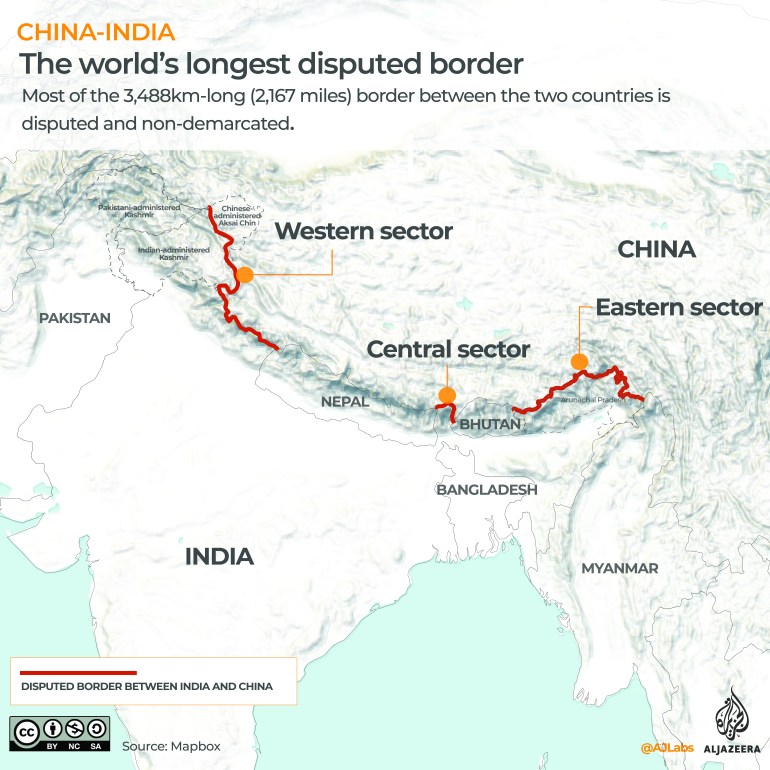India, China FMs to set up hotline as border crisis eases
Foreign ministers to have hotline as the nuclear-armed neighbours look to reduce tensions along a disputed Himalayan border.

India and China have agreed to set up a hotline between their foreign ministers as the two nuclear-armed neighbours look to reduce tensions along a disputed Himalayan border where their troops have been locked in confrontation since last year.
The decision was reached in a lengthy call between the two foreign ministers on Thursday, India’s foreign ministry said in a statement on Friday, adding that New Delhi was pushing for a quick resolution to the border crisis.
Keep reading
list of 4 itemsIndia tightens regulatory grip on social media companies
From hinterland to Hollywood, Indian farmers galvanise their stir
‘Bizarre’: Spin dominates as India thrash England in 3rd Test
“A prolongation of the existing situation was not in the interest of either side,” India’s foreign ministry said in a statement, citing the conversation between foreign minister S Jaishankar and China’s Wang Yi.
“[Jaishankar] said that once disengagement is completed at all friction points, then the two sides could also look at broader de-escalation of troops in the area and work towards restoration of peace and tranquillity,” the statement added.
On Sunday, both countries said their troops had pulled out from the Pangong Tso lake area in the western Himalayan region of Ladakh, where thousands of soldiers backed by tanks and artillery have been facing off since April.
Wang said the situation on the ground in the lake area had “significantly eased”, according to a report from China’s official Xinhua news agency.
“The two sides must cherish the hard-won progress, jointly consolidate the achievements and maintain the momentum of consultation, so as to further ease the situation,” he was quoted as saying.
Xinhua reported that Wang said the border issue “is not the whole story of China-India relations, and should be placed in a proper position in their relationship”.
But he added that India “has vacillated and even moved backwards over its policy on China, which has affected and disrupted bilateral pragmatic cooperation”.
![Pangong Lake in Ladakh, India, 22 June 2019 [File:Sorin Furcoi/Al Jazeera]](/wp-content/uploads/2020/06/9a079278a81c447c88d2bfa29570477b_18.jpeg?w=770&resize=770%2C433)
As per an agreement announced by India’s defence minister Rajnath Singh this month, the two countries will now hold talks to end close proximity deployments in other parts of Ladakh.
“Once disengagement is completed at all friction points, then the two sides could also look at broader de-escalation of troops in the area and work towards restoration of peace and tranquillity,” the Indian foreign ministry statement said.
The standoff in Ladakh began last April, when India said Chinese soldiers had intruded deep into its side of the Line of Actual Control (LAC), or the de facto border.
China said its troops were operating in its own area, accusing Indian soldiers of provocative actions.
In June, troops clashed in Ladakh’s Galwan valley, where hand-to-hand combat left 20 Indian soldiers dead. Last week, Beijing said four of its soldiers had been killed in the clash.
India and China share a mostly un-demarcated 3,488km (2,167-mile) long border, where their troops previously adhered to longstanding protocols to avoid the use of any firearms.